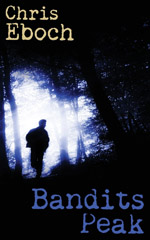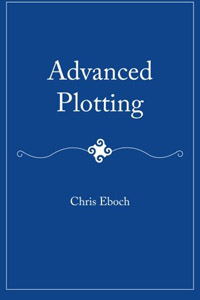by Chris Eboch
Several years ago I ghostwrote a novel about a well-known girl sleuth. The series used cliffhanger chapter endings. That seemed easy enough—find a dramatic moment and end the chapter.
Turns out writing strong cliffhangers is trickier than that. The editor responded to my effort with this comment: “I would like to see more of a slow build-up toward the intense action. In horror movies, it’s always the ominous music and the main character slowly opening the closet door that scares us the most, not the moment right after she opens the door.”
She’s noting the difference between suspense and surprise.
When something happens suddenly and unexpectedly, that’s a surprise. If you’re walking down the street and something falls onto your head, you’ll be surprised. But since the surprise came out of nowhere, it wasn’t suspenseful.
When writing, we may be tempted to keep secrets and then let them out—bang! But suspense comes from suspecting that something will happen and worrying about it or anticipating it.
To build up dramatic chapter endings, give the reader clues that something bad—or excitingly good—is happening. Here’s an example from Haunted: The Ghost on the Stairs, a novel for ages 8 to 12. The narrator, Jon, isn’t sure he believes his sister Tania saw a ghost, but goes with her to look as their stepfather films his ghost hunter TV show.
Powerful Paragraphing
Long paragraphs are fine for description. Short paragraphs are best for action, because the eye moves more quickly down the page, making the story read faster. You can also emphasize an important sentence by putting that sentence into a paragraph by itself. Compare these examples:
Version 1:
You can have dramatic chapter endings even if the characters aren’t in physical danger. In a young adult romance, for example, the drama may come from social humiliation at school and awkward or exciting moments with the love interest. Play up those moments for maximum effect.
Not every chapter has to end with a major cliffhanger. You can end in a quieter moment, as long as you’re still looking forward, reminding the reader that the character’s troubles are not over.
Cliffhangers are a powerful tool to build suspense. Choose a dramatic moment and expand the moment with sensory details for drama. You’ll keep readers turning the page.
 Chris Eboch writes fiction and nonfiction for all ages. In Bandits Peak, a teenage boy meets strangers hiding on the mountains and gets drawn into their crimes, until he risks his life to expose them. The Eyes of Pharaoh is an action-packed mystery set in ancient Egypt. The Genie’s Gift is an Arabian Nights-inspired fantasy adventure. In The Well of Sacrifice, a Mayan girl in ninth-century Guatemala rebels against the High Priest who sacrifices anyone challenging his power. Her writing craft books include You Can Write for Children: How to Write Great Stories, Articles, and Books for Kids and Teenagers and Advanced Plotting.
Chris Eboch writes fiction and nonfiction for all ages. In Bandits Peak, a teenage boy meets strangers hiding on the mountains and gets drawn into their crimes, until he risks his life to expose them. The Eyes of Pharaoh is an action-packed mystery set in ancient Egypt. The Genie’s Gift is an Arabian Nights-inspired fantasy adventure. In The Well of Sacrifice, a Mayan girl in ninth-century Guatemala rebels against the High Priest who sacrifices anyone challenging his power. Her writing craft books include You Can Write for Children: How to Write Great Stories, Articles, and Books for Kids and Teenagers and Advanced Plotting.
Learn more at www.chriseboch.com or her Amazon page, or check out her writing tips at her Write Like a Pro! blog. Sign up for her Workshop newsletter for classes and critique offers.
Chris also writes novels of suspense and romance for adults under the name Kris Bock; read excerpts at www.krisbock.com.
This article was originally published in the August 2011 issue of SouthWest Sage and is reprinted here by permission of the author.


